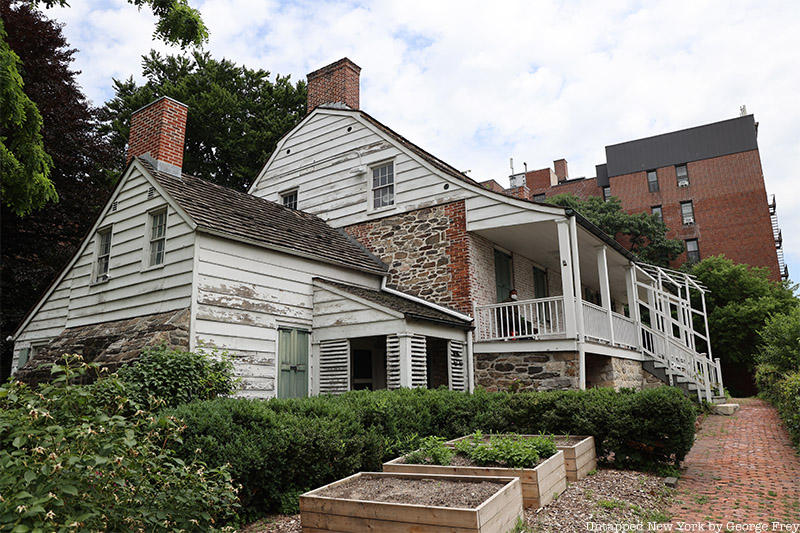3. The Dyckman Farmhouse Museum is the oldest remaining farmhouse in Manhattan

In a small park at the corner of Broadway and 204th Street is the Dyckman Farmhouse Museum, the oldest remaining farmhouse in Manhattan and one of the oldest buildings in Manhattan. Following the end of the British occupation of Manhattan during the American Revolution in 1783, the original Dyckman family homestead and orchards located near 210th Street and the East River were left in ruins. As a result, William Dyckman, the grandson of Jan Dyckman — who moved to the surrounding area from Westphalia, Germany in 1661 — began building a new Dutch-colonial farmhouse in 1784, this time located directly on Kingsbridge Road, now known as Broadway.
After William died in 1787, the house was inherited by his son Jacobus. By 1820 the Dyckman family holdings consisted of 250-280 acres of farmland stretching from river to river east to west and down from modern-day 213th Street to the 190s. Given the rocky terrain of northern Manhattan, the land could only be used to grow crops such as corn, cucumbers, cabbage, hay, cherries, and apples. Besides the farmhouse, the land also consisted of three additional homes, corn cribs, a barn, stable, and a cider mill,
In 1868, following the death of Jacobus’ last son Issac, money and select plots of the family’s land were accorded to Jacobus’ youngest grandson James Frederick Smith, so long as he changed his last name to Dyckman. The remainder of the Dyckman property, which by then amounted to 340 acres, was stipulated by Issac in his will to be sold, with the proceeds going to various family members. The land was sold at four separate auctions from 1868 to 1871, officially ending the Dyckman’s monopoly on the area, opening it up to further development.
Over the following years, the farmhouse fell into disrepair but was rebought by James’ daughters Mary Alice Dyckman Dean and Fannie Fredericka Dyckman Welch in the fall of 1915 to ensure its preservation. Under their care, the house was restored and opened to visitors as a museum displaying objects from friends and family reflecting on the Colonial Revival movement in July 1916. In addition, visitors to the museum today can also view an excavated Hessian Hut, which housed British and German Hessian soldiers during the Revolutionary War. In the early 1900s, the hut was unearthed by historian and amateur archeologist Reginald Pelham Bolton, who in 1916 found a chimney, walls, and flooring — reconstructing them to create a full hut within the park containing the Dyckman farmhouse.





